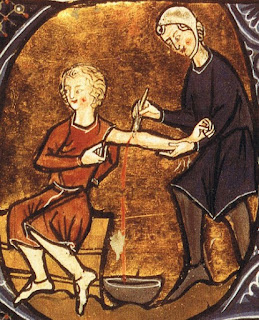He was the son of John II of Aragon and his second wife, Juana Enríquez, who was Castilian. When Ferdinand was nine years old, his father named him his heir apparent and governor of all John's lands and kingdoms. (This was despite an older son Charles, but that's another story.)
In October 1469 he married his second cousin, Isabella I of Castile, with a prenuptial agreement, (allegedly) the motto tanto monta, monta tanto, translated as "They amount to the same, the same they amount to." The point was that they treated each other as equals. The truth is that this was a purely political arrangement. Aragon longed to reconnect to Castile, and Isabella needed strong support to gain the throne of Castile when its ruler, her half-brother Henry IV of Castile (called "the Impotent") eventually died (which he did in 1474).
They did have several children, however, including Catalina, born in 1485 and later known as Catherine of Aragon, first wife of King Henry VIII of England. Other of their children became Queens of Portugal, Prince of Asturia, Archbishop of Zaragoza, and Queen of Castile and Aragon.
Ferdinand's father died in 1479, and Castile and Aragon were now united in some measure (the legal merging of the two into "Spain" took place in the early 18th century). The couple set about starting to Christianize the parts of the Iberian Peninsula over which they had any influence. The goal was to eliminate Muslims and Jews, leading to what was called the Reconquista. The conversion of Jews and Muslims in this part of the world has been recently discussed.
The final step in making their territory solely Christian was The Alhambra Decree in 1492, ordering all Jews to depart, convert, or be executed.
When Isabella died, Ferdinand lost all influence on Castile, because it passed into other hands. I'll explain that tomorrow.






